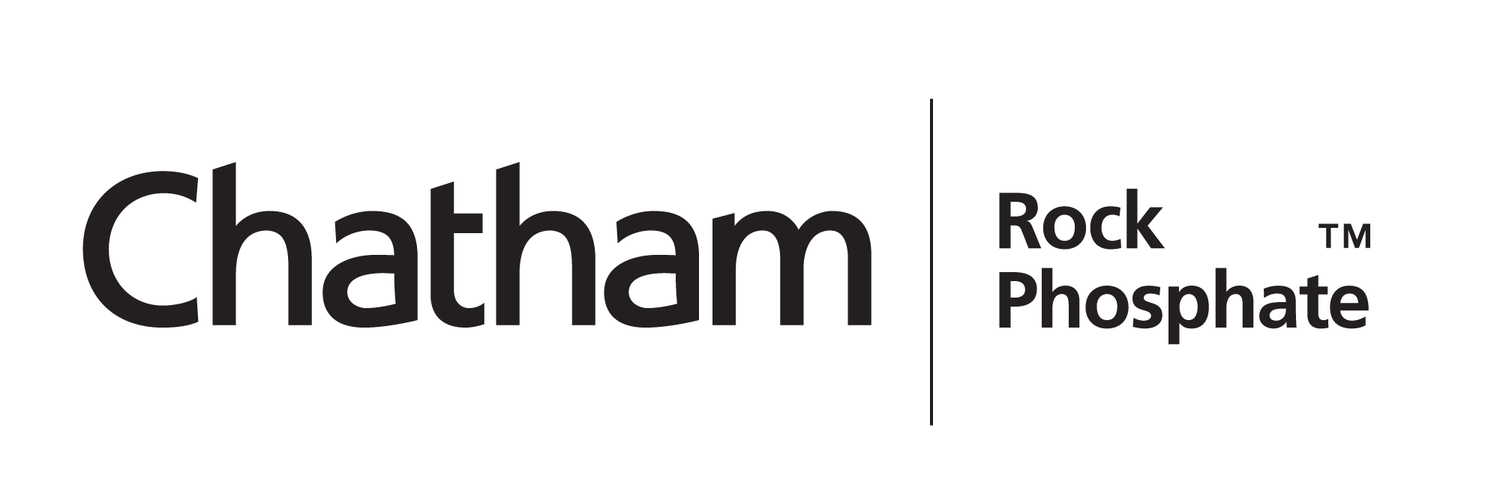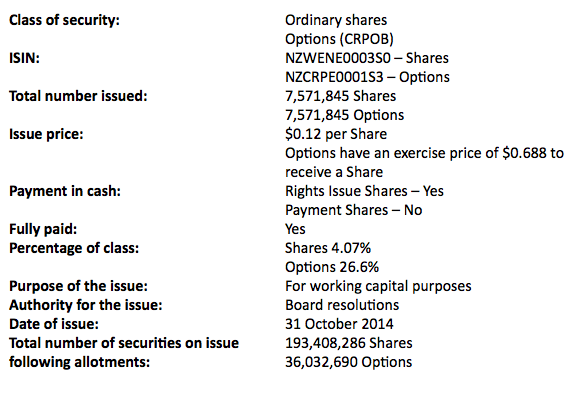Media Release
CRP closing statement presents strong case for marine consent grant
19 November 2014
Chatham Rock Phosphate’s proposal for seabed mining on the Chatham Rise involves very limited environmental risks in a small area, counsel James Winchester told the Environmental Protection Authority today.
In his closing submission he said this is a good project that has demonstrated it is worthy of consent under the EEZ Act's framework.
“It will have significant benefits for New Zealand, in terms of economic benefits, and tangible strategic and environmental benefits. This is an opportunity for New Zealand that should not be missed.
“The evidence is it will do no harm to any other industry or resource user in New Zealand's economy. There are effects on the environment (primarily benthic habitats and organisms), but they are not of a scale that is significant in the context of the Chatham Rise or EEZ, nor of such significance in terms of the intrinsic conservation value of those resources that they warrant consent being declined.
“The decision-making committee (DMC) has ample evidence to conclude the full consent sought by CRP, being mining for up to 35 years across the marine consent area, meets the sustainable management purpose of the EEZ Act.”
The few material risks are all manageable under the framework of conditions CRP proposes and risks should be the focus of the DMC's consideration, rather than uncertainty about outcomes. If there is uncertainty, but low or no risk, then appropriate conditions could deal with any small residual risks to ensure environmental protection.
Mr Winchester said submitters have asserted uncertainty without acknowledging the context or suggesting how a particular issue could be managed or addressed. There were a number of instances where submitters’ witnesses could not fault the scientific research and modelling undertaken by CRP's experts and agreed with their conclusions, but still fell back on "uncertainty" to justify a negative or unduly conservative opinion.
“Lack of detail should not be confused with lack of certainty. The nature and variability of the habitats and ecosystems are understood at a scale appropriate for the likely impacts from mining. There has been sufficient information for experts to express an opinion as to the likely effects, which has from CRP's perspective mostly involved conservative or worst-case assessments.”
Fishing and Existing Interests
Mr Winchester said the areas mined will be small compared to the marine consent area, the Benthic Protection Area and the Chatham Rise, and areas affected by commercial fishing. The mined areas of the application area are 0.6% per year, 8.6% over 15 years, or 20% over 35 years. The proposed mining exclusion areas cover 19% of the marine consent area, an area almost equivalent to the maximum that could be mined.
“The activity and its effect is miniscule on an EEZ-wide scale. The direct effects are limited, in terms of scale and extent, and severity.”
In contrast fishing activities cause significant environmental effects on the Chatham Rise through dragging heavy trawling equipment over very extensive areas, damaging sensitive benthic organisms (including corals) and generating sediment plumes in areas where commercial fish species accumulate.
“Areas of seabed and all manner of marine life are disturbed and impacted by bottom trawling, often multiple times in a year, and year after year. The annual average trawl footprint over recent fishing years on the Chatham Rise has been 17,791 km2. This does not account for multiple fishing events in the same area which fishing witnesses acknowledge that they increasingly seek to achieve.
“Existing activities and their effects provide the wider context that must be considered when assessing the nature, scale, and significance of the effects of CRP's proposal.
“Even though there has been broad scale bottom trawling on the Chatham Rise and corresponding widespread destruction, damage and removal of upright habitat-providing fauna such as sponges and corals, there appear to be no observed significant ecosystem effects resulting from this habitat loss – the fisherman appear to catch their quota from the same places year after year."
Cultural Interests
The EEZ Act does not provide for a cultural interest to be an existing interest. While CRP takes no issue with parties asserting such an interest, the interest is not recognised by the EEZ Act.
“The location of the proposal must also be relevant. What is the basis for an existing interest from a cultural perspective being claimed for an area of seabed 450km from the mainland and 250km from the Chatham Islands? What is the lawfully established existing activity that takes place there or would otherwise be affected by the proposal if it is not fishing?
“It is important to understand what the existing interest is, so the effects can be assessed. If for example an existing interest arose from a commercial fishing quota and a cultural interest was also claimed as a consequence, then are the interests (one being an existing interest, the other not) in fact different or are they one and the same? If the interests are different, then in what way?”
He also noted because social and cultural factors were absent from the EEZ Act definition of "sustainable management" also meant the focus of the DMC’s decision must be on economic and environmental considerations. CRP's evidence has demonstrated the opportunity to achieve improved biodiversity outcomes while also enabling a valuable and strategic mineral resource to be won.
“Social or cultural considerations may still be relevant, but they deserve less weight except to the extent that they may be captured in defined terms such as "existing interest".
Sufficient Information
He said all the models used in evidence are based on significant amounts of data. It has always been accepted the outputs of the model would need to be validated and there was a degree of uncertainty with the outputs. That should not, however, be confused with an absence of input data underlying the model. There should be no difficulty for the DMC in concluding the information provided met the EEZ Act's definition of "best available information".
Mr Winchester said the DMC could either ask CRP to provide additional information or issue an interim decision indicating an intention to grant consent, but request further work be done on conditions to address any areas of remaining concern or uncertainty. CRP would consent to an extension of time to enable further information to be provided, further work to be done on conditions of consent (perhaps through additional conferencing of relevant experts), and if necessary for the hearing to be reconvened in either instance.
Benthic Protection Areas
Regarding Benthic Protection Areas, he said there would be benefits if a better and more refined series of protected areas was created. CRP's proposed non-mining areas and its best endeavours to achieve full legal protection for them could be an important first step for that process.
“CRP's initiative should not be devalued simply because it involves a volunteered "best endeavours" approach. Given the vacuum of national ocean management policy that is all that can realistically be done at this time.
EPA Staff Reports
Mr Winchester said the value and relevance of reports prepared by EPA staff has been a bone of contention to CRP before and throughout the course of the hearing. It has expressed its views and concerns about the staff reports, in terms of the way they raise issues of bias, fairness, natural justice, lack of expertise, timeliness, relevance, and the level of assistance they provide to the DMC.
“CRP does not resile from any of the previously expressed concerns. If anything, the presentation of the second EPA staff report has heightened its concerns and has only served to demonstrate a staff report has no useful role and has added no value to this process. While CRP appreciated the opportunity to test the authors of the second report, the results were alarming and reflect poorly on the organisation.
The EPA staff's answers to questions revealed a number of major concerns:
· an unduly negative and conservative assessment, in which the authors fell back on "uncertainty" without putting it into any context;
· a failure to have read or understood documents or material that they sought to draw to the DMC's attention as relevant to CRP's proposal;
· a failure to assess CRP's effects and issues in context;
· the failure of the organisation to seek legal advice as to the appropriate interpretation of an important and contentious definition in the EEZ Act;
· an inability to explain how and why the organisation had made decisions or reached a view as to how the Act should be administered or applied;
· a misunderstanding or ignorance of the expert evidence presented and not in dispute;
· a failure of EPA staff to seek advice about the relevance of a separate piece of legislation administered by the EPA itself, with the consequence a legally incorrect view was presented to the DMC;
· fundamentally incorrect understandings of basic scientific issues;
· an almost total failure and/or unwillingness to advise the DMC about possible conditions or how it should approach various evidential issues in its decision; and
· unwillingness to express a view on expert evidence (presumably because they did not understand it), instead repeatedly deferring answers to a range of questions to "the experts".
Regrettably, this exercise served to demonstrate that staff reports are inherently unreliable in this process and it would be an error for the DMC to rely on a finding in a staff report inconsistent with expert evidence, or place weight on any findings in it.
“Finally, it is submitted is unfair for applicants to have to bear the costs of these exercises. If other EPA staff reports have been prepared in a similar manner and with a similarly poor level of care and rigour, it can only adversely affect the credibility of the marine consent process.”
Project Summary
The project offers new environmental benefits for New Zealand’s farming industry, by using a low cadmium, low carbon footprint, low run-off, potentially organic product. It will create a new industry with strong ties to agriculture, New Zealand’s most important export earner. CRP’s product will enhance security of supply and reduce exposure to politically risky sources of a critical input to New Zealand’s biggest industry.
Chris Castle, Managing Director +64 21 55 81 85 or chris@crpl.co.nz











 +64 21 5581985
+64 21 5581985 chris@crpl.co.nz
chris@crpl.co.nz PhosphateKing
PhosphateKing